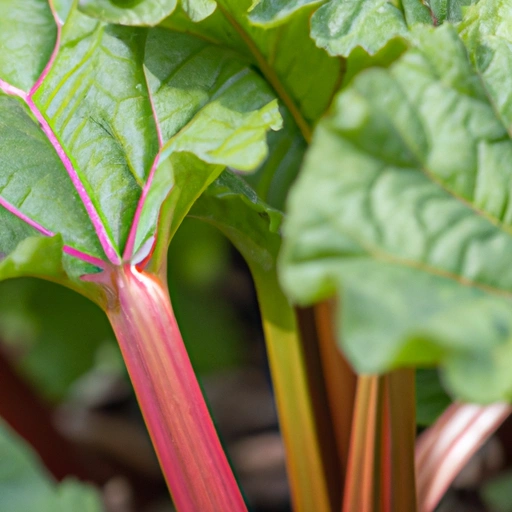Rhubarb
Description

Rhubarb is a perennial plant known for its tart-flavored stalks, which are commonly used in culinary applications. Often considered a vegetable, it is typically treated as a fruit in the kitchen, especially in desserts. The petioles (stalks) are the only edible part of the plant, as the leaves contain oxalic acid and are toxic if consumed. Rhubarb stalks range in color from green to deep red and have a crisp texture similar to celery, with a much more tart flavor.
Common uses
Rhubarb is most commonly used in sweet applications, often paired with strawberries or apples to balance its tartness. It's also used in savory dishes, where it can add a pleasant acidity.
Nutritional value
Calories
Rhubarb is low in calories, with a cup of diced rhubarb (about 122g) containing roughly 26 calories.
Protein
The same serving size provides about 1 gram of protein.
Fat
Rhubarb is virtually fat-free, with less than 0.3 grams per cup.
Carbohydrates
It contains around 5.5 grams of carbohydrates per cup, of which dietary fiber is about 2.2 grams.
Vitamins
Rhubarb is a good source of Vitamin K1, providing about 35.7 micrograms per cup, which is essential for blood clotting and bone health.
Minerals
It also provides 105 milligrams of calcium, 14.6 milligrams of magnesium, and 351 milligrams of potassium per cup.
Health benefits
Rich in vitamins, minerals, and dietary fiber, rhubarb may support digestive health, bone health, and it has potential anti-inflammatory and antioxidant properties.
Potential risks
Consuming rhubarb leaves can be toxic due to oxalic acid content. Overconsumption of rhubarb can also lead to kidney stones in susceptible individuals.
Common recipes
Rhubarb is often found in recipes for pies, tarts, crumbles, and compotes. It's also used to make sauces, jams, and chutneys.
Cooking methods
Common cooking methods include baking, stewing, and poaching. Rhubarb can also be used raw in salads when thinly sliced.
Pairing with other ingredients
Sweet fruits like strawberries and apples complement rhubarb's tartness well. Spices such as cinnamon, ginger, and vanilla also pair nicely, as do dairy products like cream and custard.
Summary
Rhubarb is a uniquely tart ingredient with a rich historical background. It's versatile in both sweet and savory dishes and offers various health benefits when consumed in moderation. With its distinctive flavor and a wide array of culinary uses, rhubarb is a delightful addition to many recipes around the world.